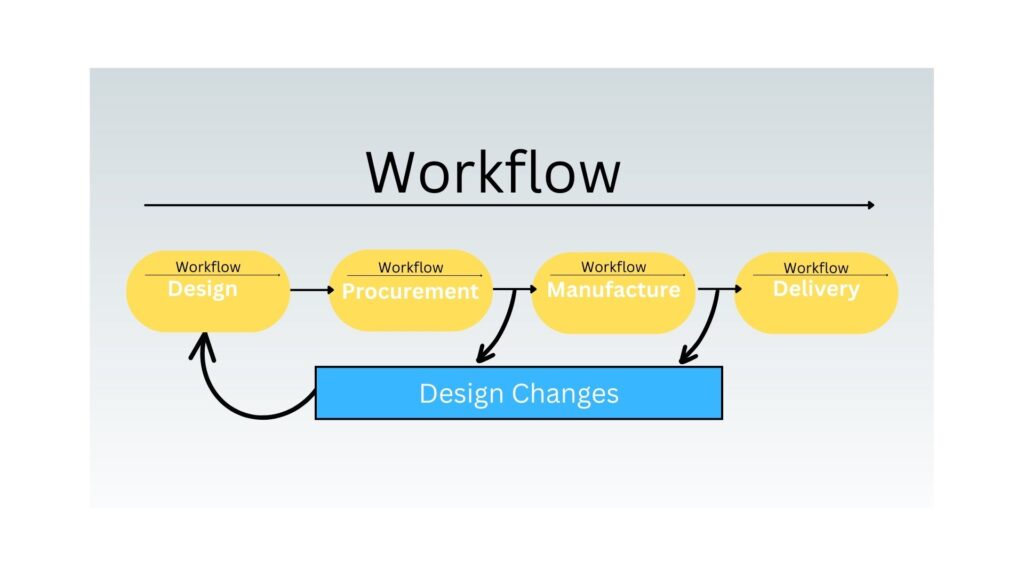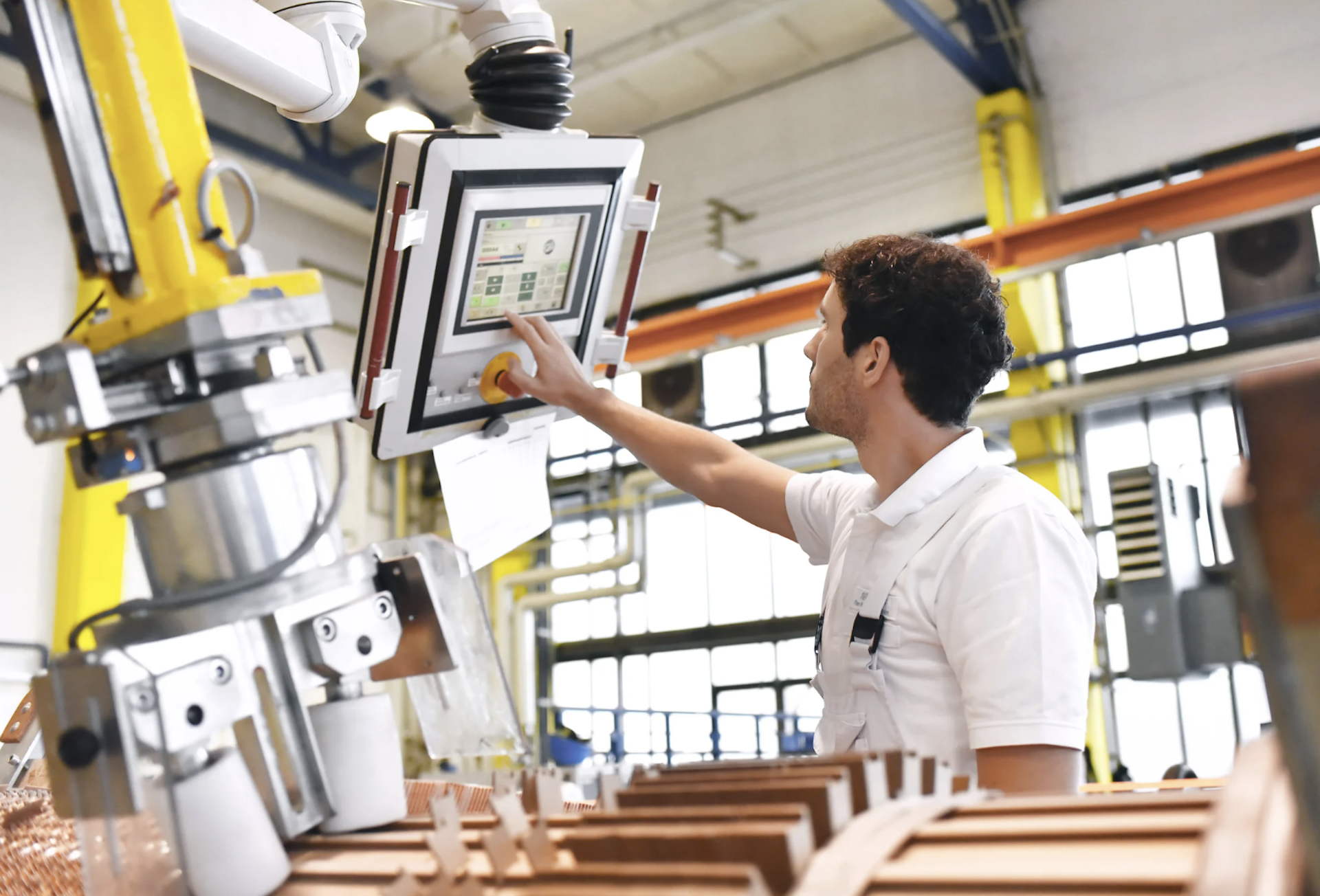Within your custom manufacturing business, you’re always looking for efficiency. When spreadsheets and manual data entry burden you, Enterprise Resource Planning (ERP) software is a great first step. Once you create an ERP workflow, you will open the door to finding efficiency throughout your company’s processes.
Simply put, an ERP is a software application that ties together your pre-existing systems. They unify core business processes such as finance, HR, manufacturing, and procurement.
But installation and customization are just the beginning. For the best optimization, you’ll have to create an ERP workflow.
Why do I need an ERP Workflow?
One of the characteristics of most ERP software is that they require a lot of customization for each company. That’s because the application exists side by side with your existing software. Automation and data gathering are essential tools, but the ERP has to have a framework to be efficient.
This is where businesses work with their partners to create the ERP workflow process. Each business task is defined, step-by-step. This is called process mapping. It ensures that once the ERP is set up, it does what you need.
From there, you can set up automation. The ERP is customized to take over as many tasks as possible. The goal is to reduce, or eliminate, human input from any given process. In the end, everything is quicker and less prone to error.
Each department will go through those two steps. Then, once the ERP is integrated, it can gather data from every connected system. This gives it the ability to display relevant information in an easy-to-access, fully up-to-date format. The result is easier performance monitoring.
What does that all mean for the end user?
Integrating an ERP typically requires a large amount of work upfront. And the danger is if you get it wrong, you can be saddled with an expensive tool that doesn’t work as well as you’d hoped. But when you get it right, it can transform your business in three important ways.
1. You will see an increase in efficiency and productivity.
Manual and repetitive tasks are two of the largest inefficiencies in modern manufacturing. Anything done by hand is slower than an automated task and more at risk of error. Data entry can also be demoralizing. Imagine how an engineer feels who got into this line of work to design, but spends a third of his time filling out spreadsheets.
Manual, repetitive data entry tasks are prone to human error and resource-consuming corrections. This inefficiency slows down processes compared to automated systems, reducing overall productivity. These tasks can be demoralizing, too. Potentially leading to burnout and disengagement, as employees feel stuck in monotonous activities.
Another risk comes from differing needs and processes in each department. Individual teams tend to develop tools that work well for them but not others. This creates a barrier to sharing information between teams.
2. Improved decision-making and collaboration
Accessing centralized data in a consistent format allows project stakeholders easy communication. It reduces department-specific jargon and keeps everyone speaking the same project language.
Easy access to information makes outlining and approving tasks simpler, quicker, and more accurate. Project managers are also able to keep track of completed and upcoming milestones. They also gain an increased ability to identify pinch points. Your managers will be able to make informed decisions about resource allocation to projects as conditions change.
3. Cost reduction and resource optimization
Better visibility into project, part, and manufacturing capacity helps you make informed decisions. You can identify parts of your process that could be improved. Before and after data will allow you to make quantitative measurements of the gains, or understand why a plan didn’t work.
Automated systems can adjust for scheduled machinery downtime, supply chain issues, and other factors that impact your projects. This allows you to move people and projects around to keep your business running. When a delay occurs, it’s easier to decide what other jobs to prioritize until the delay is resolved.
How automation enhances your custom manufacturing processes
All processes in your organization generate data. Modern manufacturing equipment is built to interface with a data collection system. An ERP can also access your collected data and use it. This will create better compliance and audit trails, improving your overall operation.
An ERP combined with automatic data collection increases project transparency. Using real-time data, project status can be seen across different departments with consistency and accuracy. It also enhances workflow efficiency by automating routine tasks such as order processing, inventory management, and financial reporting. This enables employees to focus on more strategic activities, improving productivity and decision-making.
How an engineer-led ERP improves workflow in ETO
Traditionally, ERP software is good at tying together inventory, purchasing, and production processes. But most of these systems are generic off the shelf and require a lot of customization to work within a manufacturing environment.
When your business model is based on custom manufacturing, with an in-house engineering department, the customization gets even more complicated. The key is to find an ERP created for what you do and combine it with an ERP workflow that allows you to evolve your existing processes.
Projects start in Engineering. Parts, subassemblies, and the production item all get drafted in CAD. This is where the initial information for timelines, purchasing, and inventory originates. It’s also where your design changes come from, which can affect everything else downstream.

An ERP that allows the engineering department to take the lead will provide transparency to project status. You will see which steps need more attention and predict where there might be a hold-up in the project. In essence, the software lets you prioritize (and re-prioritize) every step of the project.
The COUNTERPART ERP was born to fill that need. We are manufacturers and engineers first, and we realized we needed a system to help streamline our processes. But there wasn’t anything on the market that fit the requirements. So we designed our own.
COUNTERPART is an ERP that is built to let engineers lead the process. It allows you to run your business your way, without having to conform to how the software wants you to do things. Your workflows will just work.
We’ve designed our software to be configurable upon installation. No heavy-duty software customization is needed. This reduces user costs and software complexity. It also makes applying updates a simple task.
Take a look at what COUNTERPART has to offer. You can learn more about this ERP and how it will integrate with your workflows when you check out our website.
